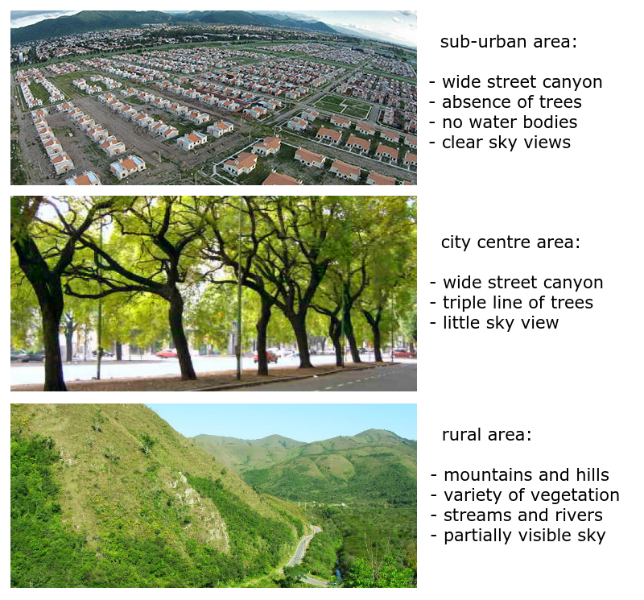
Uploaded on 2017-03-08 by Pascal Green
Which are the main UHI effects that you can identify in your area? For lack of results specifically for the Salta area in Argentina, I looked for studies-results in Buenos Aires and other arid zones in Argentina. I was mostly helped by results from studies of the city of Mendoza, which has extensive research and is somehow compareable to Salta. Buenos Aires mean UHI in decades: 60's: 2.2 C' 70's: 1.9 C' 80's: 1.7 C' 90's: 1.4 C' 00's: 1.2 C' Most notable is de decrease of the mean UHI effect, while expected reverse results, based on city growth and increased activities. In the city of Mendoza, several studies where performed taking in account the width of the street canyon in relation to different species of trees planted and their respective heights. Salta has a simular lay-out, where green shadow tunnels are created for pedestrians. Although the trees generally have a positve effect on the UHI during hot day-hours, radiation-heat-loss is less during the night because of less visible sky. Simular results to Buenos Aires of decreasing UHI effects where measured in Mendoza, suposedly caused by tree-planting programs. Which are the measures you would propose? The idea of green tunnels is proven to be a succesful one, based on results from the city of Mendoza. However the results can't be simply copied into other cities, some general data was generated relating to street-canyon width, height and species of trees and the resulting effects in daytime and nighttime cooling. The best results where made using a mixture of trees of average height (10-15m) though gain during daytime cooling resulted in loss of nighttime cooling and vice versa. My personal proposal would involve introducing pedestrian/cycling routes through the city, connecting the most important hubs, centres, parks and public transportation stations. These routes would replace the regular carlanes which limit tree-planting to sidewalks closest to buildings, thus limiting their cooling during nights. Opening the full width of these street-canyons (10-15m) for planting trees would allow for more diversity, bringing the green tunnel more to the centre of the canyon, while choosing a more open planting pattern close to the buildings. Simular planting diversity along the width of wider street-canyons can be applied, creating a pedastrian path at the center while leaving single or double file car-routes on either side of the green tunnel. In my personal opinion: applications like these would not only improve the UHI, but could contribute to de decrease of the use of cars, increasing livabilty and decreasing stress, noise and generated heat in city centers. Is UHI effect concerning policy making in your area? While there are no specific policies in Salta for reducing the UHI, initiatives like re-introducing trees to the city have been gaining momentum during the last decenia. The urgent need for housing makes that the rising of monolite suburbs is staggering and little to no planning for reducing UHI are taken into account. Rather a tendency of is becoming clear of deforestation around the city to gain more space for new suburbs. Alongside many native rivers and streams are being cut of, creating yearly floodings in the city and fires in the surrounding mountains and forests. In this way, around the city a visible desert is emerging as a result. Besides social initiatives there is no visible policy making in local politics to counter these effects.